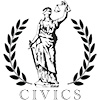| « Durbin: I Still Support Muslim Community Center | Where Illinois Pols Are In The Rankings » |
Urban Planning Tue Aug 31 2010
Foursquare the Digital Divide
It's been noted that Chicago is perhaps the most studied city in the history of cities. Maybe not in terms of the number of history books per se, but in terms of dissecting the organism that is the City itself. Much of this is due to the development of the "Chicago School" of sociology, where University of Chicago professors Robert Park and Ernest Burgess solidified their branch of sociological study by focusing directly on the urban form. Echoing Aristotle's view of the naturalness of the city, Park remarked, "The city is not...merely a physical mechanism and an artificial construction. It is involved in the vital processes of the people who compose it, it is a product of nature and particularly of human nature."
Park and Burgess fleshed out the above quote to form the basis of study of the human ecology of a place, with the neighborhood acting as the elemental level on which to observe. The Chicago school emphasized, if not an advocacy of the street, a focus on the view of the street, in determining the ways in which cities, and societies organize themselves. In a pedagogical way, Park was trying to examine and exhibit how individuals and their interactions make up a community. If only Park and Burgess had had Facebook to help.
As we fast-forward from Park's work into the present, these individual interactions are literally being broadcast at every second of the day. In an inversion of Park's methodology though, the tapestry of communications is being woven together by the individuals within communities themselves by their various postings on social media sites, blogs, etc., and not so much as an academic exercise in which the interactions of a place are purposely allocated together. As a result, the information doesn't need to be mined necessarily as it simply needs to collated. Take a sample size from a city neighborhood, troll their Facebook/Twitter/MySpace pages, and a good idea may develop of what the individuals' larger community looks like.
Much has already been noted about how the emergence of "new media" technology and hyperlocalized sites are transforming cities, and even aiding in the creation of new ones. For tech and policy wonks, "Open City" is a handshake phrase, websites and apps such as SeeClickFix offer the potential to marry a city's 311 system into digital distribution, and news-aggregating sites such as Everyblock keep tabs on all things happening around one's locale. These new media developments are all exciting, innovative and sure to be influential makers and shapers of how people relate to their urban environments. With such hyperlocalized content and context, the elemental level of the neighborhood, as examined in Park's work, is again a focal point.
However, this exciting new media that places more power in the hands of the technologically-savvy citizen advocate, also dramatically highlights the digital divide between well-connected, stable, affluent neighborhoods, and less affluent, less-connected, less-stable neighborhoods, which tend to be majority-minority. One site that at least in principle has the potential to change this dynamic is Foursquare. Foursquare is a site that essentially acts an as social media open-source city guide, with individuals using their mobile devices to "check in" at places across their cities, letting people within their circle know where they are, and what they like. Visit a place more than anyone else and check in via Foursquare, and you can even become the "mayor" of that place.
On the surface of it, a site built upon a young demographic with mobile devices, money, and time to spare by "checking in" at their favorite bar, coffee shop, restaurant, etc., doesn't seem to offer much towards bridging the digital divide. But what Foursquare does differently than anybody else is that other than merely socializing on the web (Facebook), aggregating news (Everyblock) or providing a platform to contact city departments (SeeClickFix), it allows people to interact with and take ownership of a physical space. A claim is placed, and when people are invested in such a way towards something, there's usually a correlation between preserving and maintaining it. Variations of this argument have been used ad nauseum in the past to encourage homewonership, but applying this type of thinking in a digital realm towards under-served and underutilized neighborhoods could do wonders for reclaiming vacant space, and reorienting the interaction between residents of such neighborhoods and the larger City in question.
Earlier this summer, Chicago was awarded some $16 million in federal funds (with $5 million in matching funds) to help mitigate the digital divide. The city should be looking for ways to implement tools and programs that mirror the same type of ownership Foursquare allows its users over space, rather than just subsidizing internet access to previously cutoff communities. Park noted that the rise of industrialization equated with a rise in crime. If that's indeed the case, declining industrial neighborhoods like Chicago's Lawndale have to deal not only with that legacy, but also the dearth of it as well. While new development is needed and welcome, it will never replace what once was or fill the void of what needs to be. And for a neighborhood like Lawndale, it is not just industry that is lacking. What the neighborhood is lacking is engagement. Bringing individually driven technologies to people can provide a platform to do so, and literally change the spatial configurations of a place if the community feels further invested in it.
With the federal funds already earmarked, Chicago now has an opportunity to explore how to use technology not as a salve, but as an interactive tool for neighborhood level engagement. If they were alive today, Park and Burgess would just have to sit back and watch the next step of the city's human ecology take shape.











